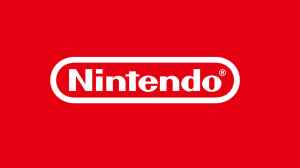After years in development and multiple creative teams, The Flash movie is the closest it has ever been to hitting the big screen. The movie, which will provide the first solo venture of Ezra Miller‘s Scarlet Speedster, is currently scheduled to be released in June of 2022, and is expected to begin filming in March of next year. While a lot is still unknown about the project, we do know that it will be dipping into the DC Comics multiverse, particularly with the confirmation that Michael Keaton’s iteration of Batman will be appearing in the film. We know that Miller’s version of Barry Allen has faced – or is going to face – the multiverse head-on, after he crossed paths with Grant Gustin’s iteration of The Flash in The CW’s “Crisis on Infinite Earths” TV crossover earlier this year. Not only did that moment absolutely exceed fans’ expectations, but it could have provided a clever path for The Flash movie – as well as everything else in DC’s main film continuity – to label itself uniquely within the larger multiverse — as Earth-One.
Videos by ComicBook.com
Once “Crisis” was over, it was somewhat easy for fans to be able to construct a new map of DC’s live-action multiverse — the main Arrowverse Earth is now “Earth-Prime”, Stargirl exists on Earth-2, Doom Patrol exists on Earth-21, and so on. Even some of the Earths that weren’t shown in the post-“Crisis” finale – including the Earth where Keaton’s Batman resides, which was technically dubbed Earth-89 – were given some sort of official distinction, and were assumed to be restored in some capacity in the new multiverse. The only outlier was the Earth that Miller’s Flash resides in, as his was the only major “Crisis” cameo that didn’t have an Earth number assigned to it. Miller’s cameo occurred in the Speed Force within the fourth hour of “Crisis”, at a time when the multiverse was technically destroyed outside of a few pockets.
This leaves the question of exactly what Earth Miller, the events of The Flash movie, and nearly every live-action DC movie since Man of Steel exists in. While an argument could be made for that continuity to take place on an entirely new Earth number – something that hasn’t already been claimed in DC Comics canon – the circumstances of the post-“Crisis” multiverse leave one major option open — Earth-One. Earth-One has had different qualities across decades of DC Comics, with the title first being used (alongside Earth-Two) as a way to differentiate between the Silver and Golden Age iterations of certain characters. For years, Earth-One was essentially seen as DC’s default universe for storytelling, only for that to shift to New Earth or Earth-Prime following the events of Infinite Crisis. 52 later rebranded Earth-One as a more modern, updated version of certain DC Comics characters, a premise that was explored in series like Superman: Earth One and Batman: Earth One. That qualifier has largely stuck in the current DC Comics continuity, which is still being expanded upon to this day.
Previously, the main Arrowverse continuity was dubbed Earth-One — something that made sense from multiple angles. Not only did it allow The Flash TV series to have a relatively small-scale with its early multiverse stories (including a take on the Silver Age “Flash of Two Worlds” crossover event), but it arguably felt like a fitting moniker for the approach the Arrowverse was taking to its characters. Now that that franchise is nearly a decade into its run – and changed to Earth-Prime in the final hours of “Crisis” to bring Supergirl and Black Lightning into their continuity fold – Earth-One is technically up for grabs — and it could be a pretty good fit for the continuity of DC’s main set of films.
While the main DC Films continuity has already debuted eight films, it still has a lot of continuity left to explore and expand upon in its upcoming sequels and new franchises. To an extent, the approach to building out its universe feels reminiscent of Silver Age Earth-One storytelling, in the sense that everything defaults to the main universe until proven otherwise, and it focuses more on expanding out individual movie series than building to a franchise-wide crossover. Not only that, but dubbing the main DC Films continuity “Earth-One” would give it the significance it deserves in the overall multiverse, and still make its place relatively easy for general audiences of The Flash movie to understand.
Do you think that The Flash movie should dub the main DC Films universe “Earth-One”? Share your thoughts with us in the comments below!
The Flash is currently scheduled to be released on June 2, 2022.








